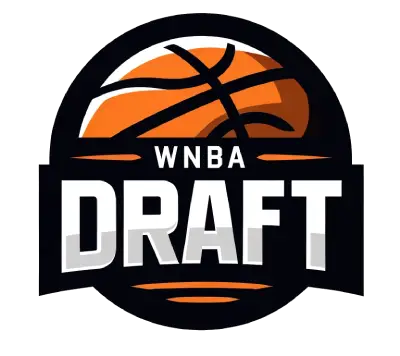The WNBA draft is slated for Friday (ESPN/ESPN App, 7 p.m. ET), and Sabrina Ionescu is the projected No. 1 pick for an Oregon program that figures to have a banner night. How much does college matter when WNBA teams make their selections? It’s more a piece of data for what is inherently a speculative process. With that in mind, ESPN Stats & Information devised a formula that included All-America citations, WNBA draft picks and career stats from the 1999-2000 through 2018-19 college seasons to find out which schools have had the best players in women’s basketball at five modern position types. Note that this study doesn’t measure their eventual success (or lack thereof) in the WNBA. But it’s an indicator of who has produced the top talent for the WNBA to choose from at these five spots over the past two decades:
PlaymakersSue Bird (UConn), Skylar Diggins-Smith (Notre Dame), Odyssey Sims (Baylor), Danielle Robinson (Oklahoma), Kristi Toliver (Maryland) ESPN
Assists and steals, along with points, were the key measurements of a program’s playmaking depth. Most on this list were traditional point guards, such as UConn’s Sue Bird and Moriah Jefferson, Baylor’s Odyssey Sims, Oklahoma’s Stacey Dales and Danielle Robinson, and Notre Dame’s Skylar Diggins-Smith and Niele Ivey. But UConn’s read-and-react offense and ability to disrupt passing lanes on defense tend to produce high assists and steals totals for forwards too, which was the case with Svetlana Abrosimova and Gabby Williams. Diana Taurasi, who wasn’t seen as a point guard, per se, in college but usually had the ball in her hands in key situations — especially during her last two seasons — also was a key factor in UConn leading this category by a wide margin. — Mechelle Voepel
1. UConn
2. Baylor
3. Oklahoma
4. Notre Dame
5. Maryland
SharpshootersDiana Taurasi (UConn), Candice Wiggins (Stanford), Asia Durr (Louisville), Stacy Frese (Iowa State), Georgia Schweitzer (Duke) ESPN
This is about the best from behind the arc, and UConn and Stanford were quite a bit ahead of the field in that area. Two of the top five scorers in UConn history — No. 1 Maya Moore and No. 5 Katie Lou Samuelson — are part of a deep pool, which also includes Taurasi, Bird and UConn’s all-time 3-point leader, Kaleena Mosqueda-Lewis. The likes of Nicole Powell and Candice Wiggins bolstered Stanford. Asia Durr and Shoni Schimmel led the way for Louisville, while Lexie Brown was among the best for Duke. Stacy Frese was an ace for Iowa State, a team that perennially relies on the 3-pointer. Kristi Toliver — whose 3-pointer sent the 2006 NCAA championship game to overtime, during which Maryland won — is the Terps’ signature player from long range. — Mechelle Voepel
1. UConn
2. Stanford
3. Louisville
4. Duke
t-5. Iowa State
t-5. Maryland
WingsMaya Moore (UConn), Nicole Powell (Stanford), Monique Currie (Duke), Marissa Coleman (Maryland), Nina Davis (Baylor) ESPN
Wings are expected to do a lot of everything, and they were graded accordingly, with emphasis on scoring from 2- and 3-point range, rebounding and assists. The same two schools — UConn and Stanford — were 1-2 at wings and sharpshooters, and many of the same players contributed to that status. That includes Stanford’s Jeanette Pohlen and Alanna Smith, who along with Wiggins and Powell, were on both lists. UConn’s Taurasi and Maryland’s Toliver were big factors in their schools’ ranking at playmakers, sharpshooters and wings, showing just how versatile and valuable they were in college (and continue to be in the WNBA). Toliver’s classmate, Marissa Coleman, was another big contributor to Maryland’s ranking. Wing is also a strength of Duke and Baylor, with players such as Monique Currie for the Blue Devils and Sims for the Lady Bears helping to establish their place here. — Mechelle Voepel
1. UConn
2. Stanford
3. Maryland
4. Duke
5. Baylor
Interior scorersBreanna Stewart (UConn), Tamika Catchings (Tennessee), Nneka Ogwumike (Stanford), Sophia Young (Baylor), Crystal Langhorne (Maryland) ESPN
Key measurements were points, offensive rebounds and free throws, and this is the lone spot where UConn wasn’t first. Not because the Huskies didn’t have great forwards and centers, including Tina Charles and Breanna Stewart, who have been MVPs in the WNBA. But the two schools who are 1-2, Baylor and Tennessee, have relied more on their interior scorers. Sophia Young, Brittney Griner and Kalani Brown — post players who were key in leading Baylor to its three NCAA titles, in 2005, 2012 and 2019 — carried the Lady Bears to the top of this category. Tamika Catchings and Candace Parker, both national champions for Tennessee who also have been MVPs in the WNBA, led the Lady Vols. Alyssa Thomas and Crystal Langhorne sparked Maryland, and sisters Nneka and Chiney Ogwumike led Stanford. — Mechelle Voepel
1. Baylor
2. Tennessee
3. UConn
4. Maryland
5. Stanford
Post defendersBrittney Griner (Baylor), Ruth Riley (Notre Dame), Candace Parker (Tennessee), Tina Charles (UConn), Jantel Lavender (Ohio State) ESPN
Defensive rebounds and blocked shots were primary stats here. Again, 11-time NCAA champion UConn is the top school, with a lot of depth, including players such as Charles, Stewart, Napheesa Collier, Stefanie Dolson and Kiah Stokes. Ohio State ranked second behind Jessica Davenport and Jantel Lavender, who each were Big Ten player of the year three times. Ohio State and Iowa State (sharpshooters) are the only schools to make these rankings that did not go to the Women’s Final Four in the past 20 years; the Buckeyes’ only trip was in 1993, and the Cyclones have never been. Parker, Kelley Cain and Isabelle Harrison led the way for Tennessee, while Griner, Brown and Lauren Cox — who is expected to be a WNBA lottery pick this week — boosted Baylor. Ruth Riley and Brianna Turner were top rim protectors for Notre Dame. — Mechelle Voepel
1. UConn
2. Ohio State
3. Tennessee
4. Baylor
5. Notre Dame


